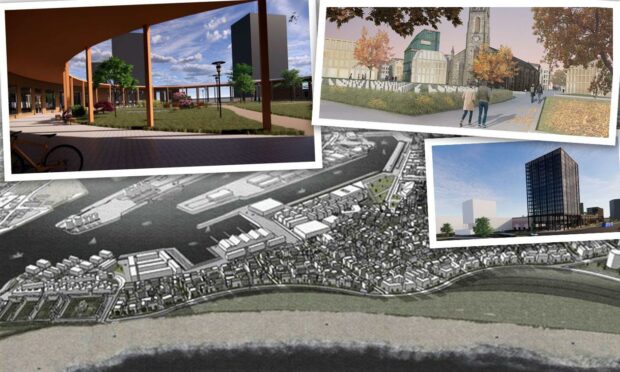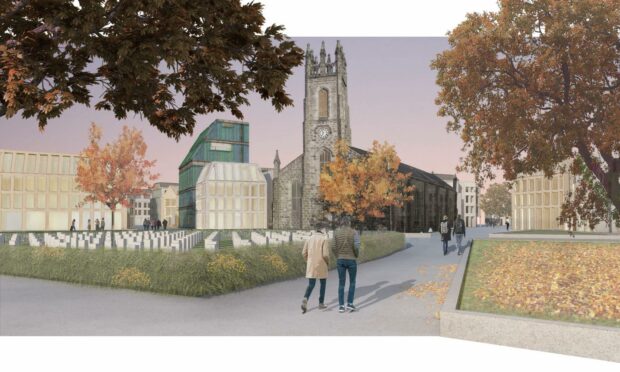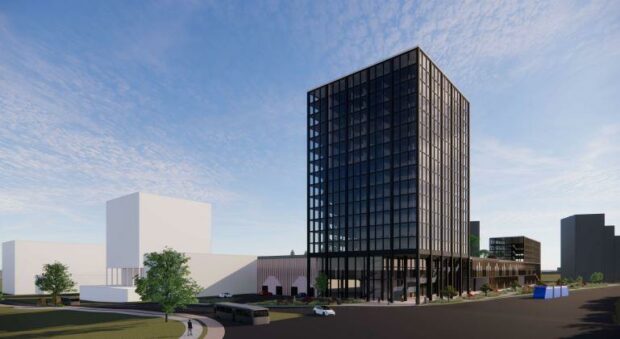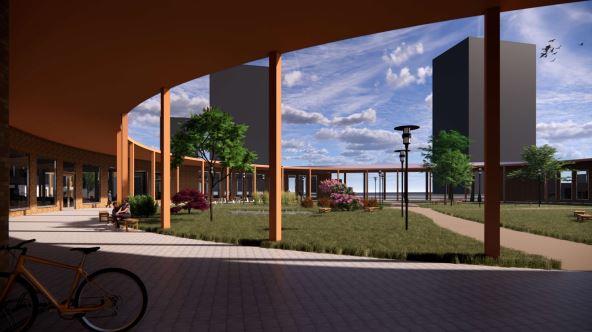Aberdeen’s future has been reimagined by a group of talented would-be architects who have developed plans which could transform the city centre.
The students at Robert Gordon University’s Scott Sutherland School of Architecture have drafted radical proposals which they believe put people “at the heart” of the city.
With the new South Harbour nearing completion, the talent of tomorrow have examined how land around the existing port could be better used in the future, with a focus on making Aberdeen more sustainable.
The proposals also include creating “urban villages” around city landmarks leading to what they believe would be a “sustainable environment” for people to live close to the centre.
And, as part of a masters project, they came up with further plans to redesign King Street as an active travel corridor.
Under their proposals, a new community would be created around East St Clement’s Church, with new affordable types of housing designed to accommodate all demographics close to the city centre.
In their vision for the city’s future the young adults have reimagined the area around the seafront, moving all industrial sites to the South Harbour and replacing them with entertainment facilities, shopping and other activities.
There are also plans to transform King Street by dividing it up into several ’15-minute zones’.
One would include the Arts Centre, comedy club and Lemon Tree, the second Aberdeen University and the final zone would “celebrate the urban character” of the site.
Students’ plans to ‘improve quality of life’
Under the plans car-free zones, dedicated to pedestrians and cyclists, would be introduced along with a tram network.
“We want to improve the quality of life along King Street by reducing traffic and by enhancing the sense of community in the area,” explained student Matt Clubb.
“Our designs adopt the 15-minute city principal, where the local area can meet all the daily needs of the residents within a 15-minute walk.
“Improved local housing, as well as enhanced green spaces and local markets, would create spaces for people again.
“More active travel routes would also help people get to the beach and to the city centre without taking the car helping Aberdeen to reduce carbon emissions.”
Earlier this year Aberdeen City Council approved a £150 million masterplan project to regenerate the city centre and beach area.
RGU lecturers believe the students’ proposals tie in the with the masterplan’s aims of encouraging people back into the city centre.
They hope to discuss the plans, which are inspired by schemes in other parts of Europe and elsewhere, with city leaders.
‘We need a city to make people proud of’
Professor Neil Lamb, the course leader, said the plans were about creating “a magnet” to attract people to the city centre.
“We need a city to make people proud of,” he said.
“What can Aberdeen do to maximise the potential it has got?
“Some of the ideas need long-term thinking, rather than short-term solutions you usually think about because it is locked into a political cycle that generates that type of response.
“When you look at other cities around the world it is those long-term strategies which do best.
“You could create a place for people at the heart of the city and revitalise the harbour area while also providing new prototypes for city living.
“For far too long we have stuck to a way of thinking around building on the periphery of the city and expanding into greenfield, and quite frankly that’s very much at odds with sustainable principles.
“We have got to look at protecting our city centre. We have one of the most beautiful cities in the country and we have to respect it, understand it and add to it in a thoughtful way.”













